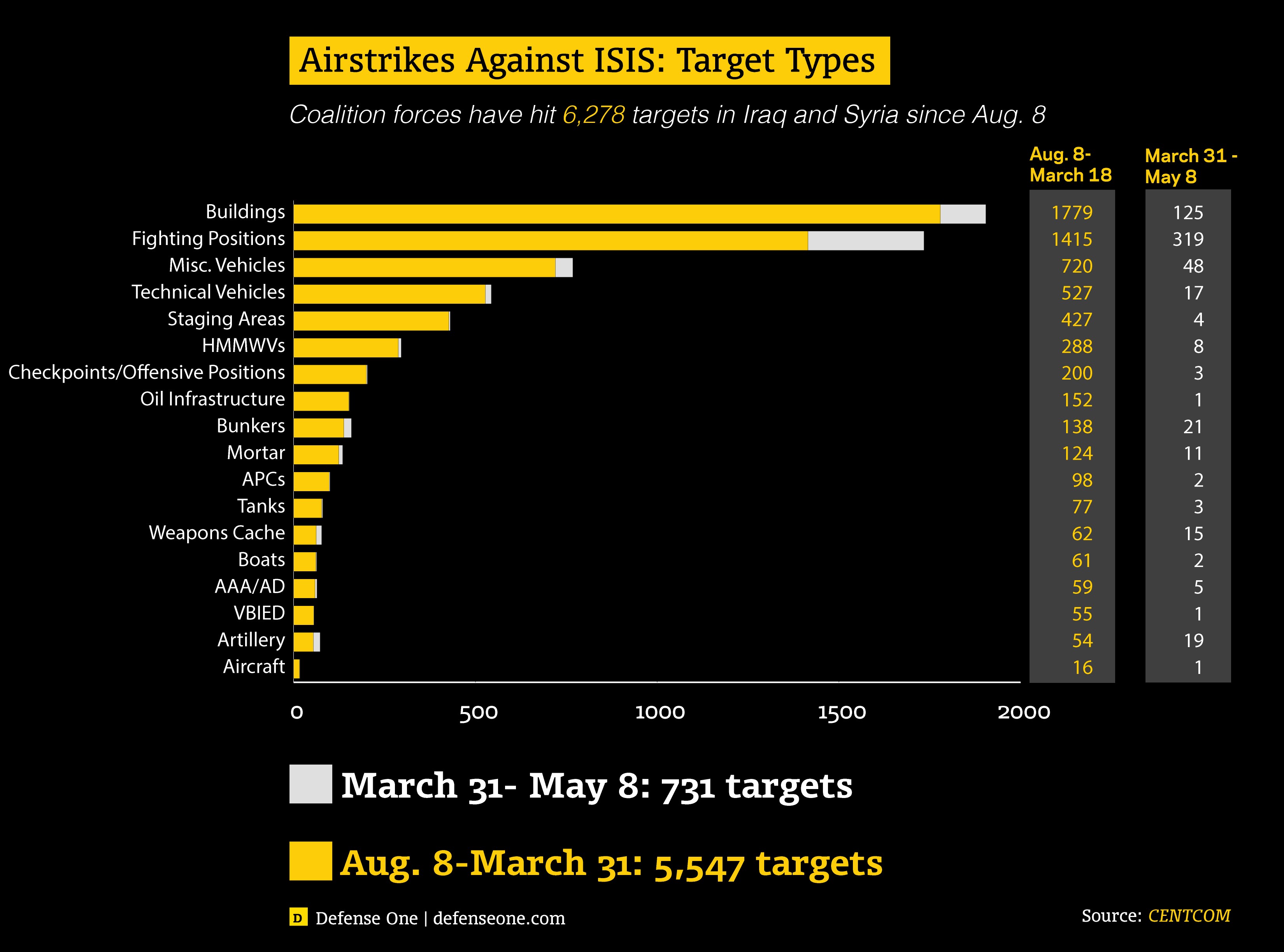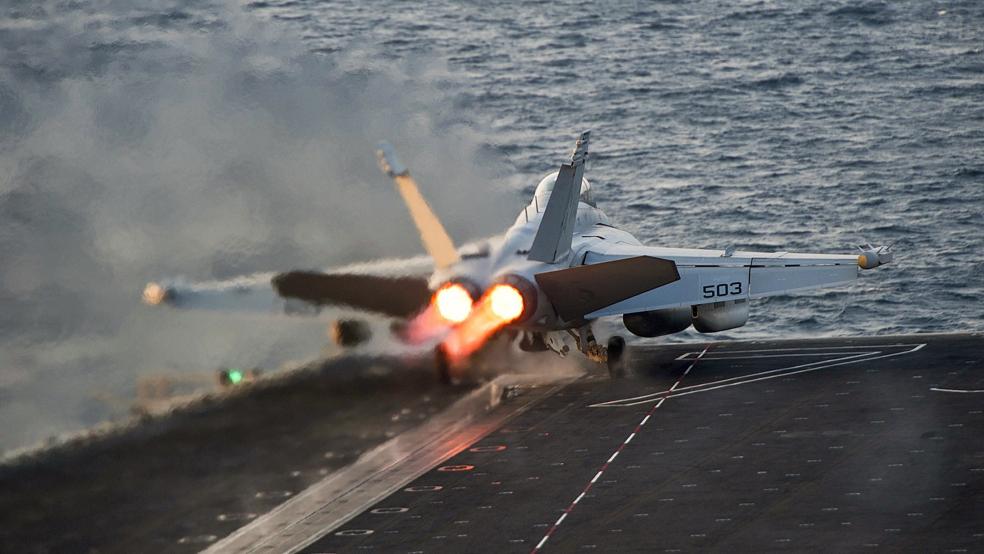After directing most of its fire power to blowing up buildings in Iraq and Syria in pursuit of ISIS terrorists, the U.S and allied forces more recently have altered their tactics by going after smaller targets to flush out and kill the enemy, according to the Pentagon.
Recent allied successes -- including the Iraqi government forces’ reclaiming of the northern city of Tikrit from ISIS terrorists – has underscored the importance of U.S. air power being used in close coordination with Iraqi and other allies on the ground. Because of the increased intensity of U.S. air strikes, ISIS forces have adapted by lowering their profile and making themselves smaller targets.
Related: Why America’s War with ISIS Will Take Years
Rick Brennan, a senior political scientist at the RAND Corporation who spent five years as a senior adviser to the U.S. military in Iraq, told Defense One that ISIS is providing fewer large targets for coalition strikes.
“Now they’re acting much more like an insurgent group,” Brennan said. “They’re hiding, they’re moving in small groups; they’re trying to protect themselves because they realize that if they expose themselves to aerial or visual contact to U.S. and coalition forces, they’re likely to be struck.”
Disclosure of the changing allied tactics comes amid reports that ISIS’ leader Abu Bakr al-Baghdadi has resurfaced weeks after he was reported incapacitated or gravely wounded in a March 18 airstrike launched by the U.S.-led coalition.
In a 35-minute audio message posted on militant Web sites, Baghdadi sharply criticized the Saudi Arabia led military offensive in Yemen, which began in late March. He also mentioned the flight of residents from Iraq’s Anbar province last month after fighting that involved ISIS militants, according to media reports. U.S. authorities have yet to verify the authenticity of the message.
According to Pentagon data, ISIS vehicles and mortar positions have become more popular targets than buildings. Only 17 percent of the strikes in the past month have been targeted at buildings, down from 30 percent overall. Brennan said that ground troops such as U.S. special operations forces could enhance the effectiveness of the air strikes by increasing the communication and intelligence surrounding potential targets.
Related: Britain Hangs Back As the U.S. Pays $2.2 Billion to Fight ISIS
The United States continues to be responsible for the vast majority of the strikes in Iraq and neighboring Syria. The U.S. conducts 94 percent of the strikes in Syria and 66 percent of the strikes in Iraq. The operation has cost the United States $2.11 billion since August 8, or $8.6 million per day, according to the Pentagon.

Top Reads from The Fiscal Times:





